We’ve all seen those epic photos of the Milky Way streaking across the sky, or the moon and all its features captured in high-res glory. It’s hard not to yearn to snapshots like those on your own, yet most astrophotography equipment is stupendously expensive and complicated. But lament not. You can take astrophotography (photography in astronomy) right from your phone, as long as you employ a few tricks of the trade.

How I create an Instagram photo dump, and 3 tools you’ll need to perfect yours
Posting Instagram photo dumps is more than a fad, it’s become a craft. Here’s our tips and tools to curate the perfect aesthetic.
Not every phone will produce professional results, but you might be surprised to discover how well your photos turn out, even with the most mid-tier phone camera. I recommend following this guide closely to get the best results. To compile it, I called upon my trusty team of fellow photography pros at Pocket-lint to weigh in as well as bring forth my own experience as a professional photographer. These are the most important things to keep in mind when shooting astrophotography from your phone.
Seven steps to capture the stars with a smartphone
1. Long exposure is key.
Nearly every photo you’ve ever seen of a star-streaked sky was a long-exposure shot. For example, the James Webb Space Telescope opens its aperture for around two hours just to take one image. Because stars and planets are so dim, cameras need a long time to take in their light.
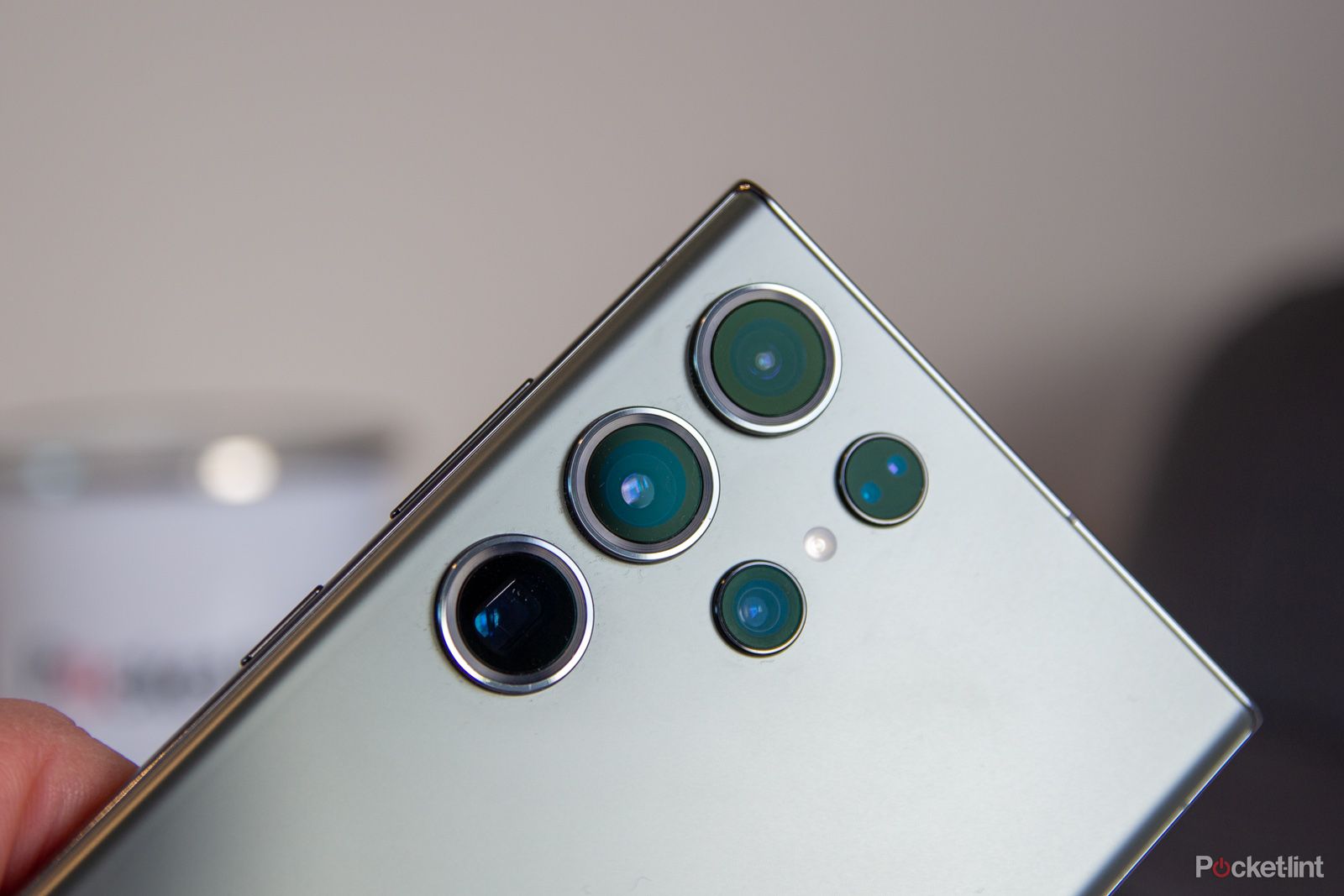
How I take stunning wildlife photography with my phone (and 3 gadgets that help)
Smartphones can snap great photos, but animals and birds require their own set of skills and tools.
But for smartphones, long exposure isn’t always readily available. A few newer models, like the Sony Xperia 1 V, offer full manual controls. These flagship phone cameras allow you to set exposure times of 10 to 30 seconds, the optimal shutter speed for astrophotography. However, most phone cameras don’t have manual controls, and those that do may not offer long enough shutter speeds. To check if your phone’s native camera app is up to the task, navigate to the camera settings and poke around for options like “manual exposure,” “night mode,” or “long-exposure mode.””If it doesn’t, third-party apps are the answer.
You can experiment with different apps to find the one that suits your style. NightCap Camera and PhotoPills are both specifically designed for astrophotography, so we recommend trying those out first.
For general manual controls, as well as long-exposure features, here are some highly-rated options for iPhones:
- Slow Shutter Cam
- ProCamera
- Easy Long Exposure Camera
- Night Camera: Low light photos
And for Android phones, check out these apps:
- Manual Camera DSLR
- ProShot
- Long Exposure: Motion ProCam
2. Optimize your camera settings
Besides using manual exposure to lower your shutter speed, there are some other settings you can take advantage of. You’ll want to optimize the image quality, so look for any settings that allow you to crank up the resolution and color profile. Avoid using HDR or any filters, including AI-enhancements.
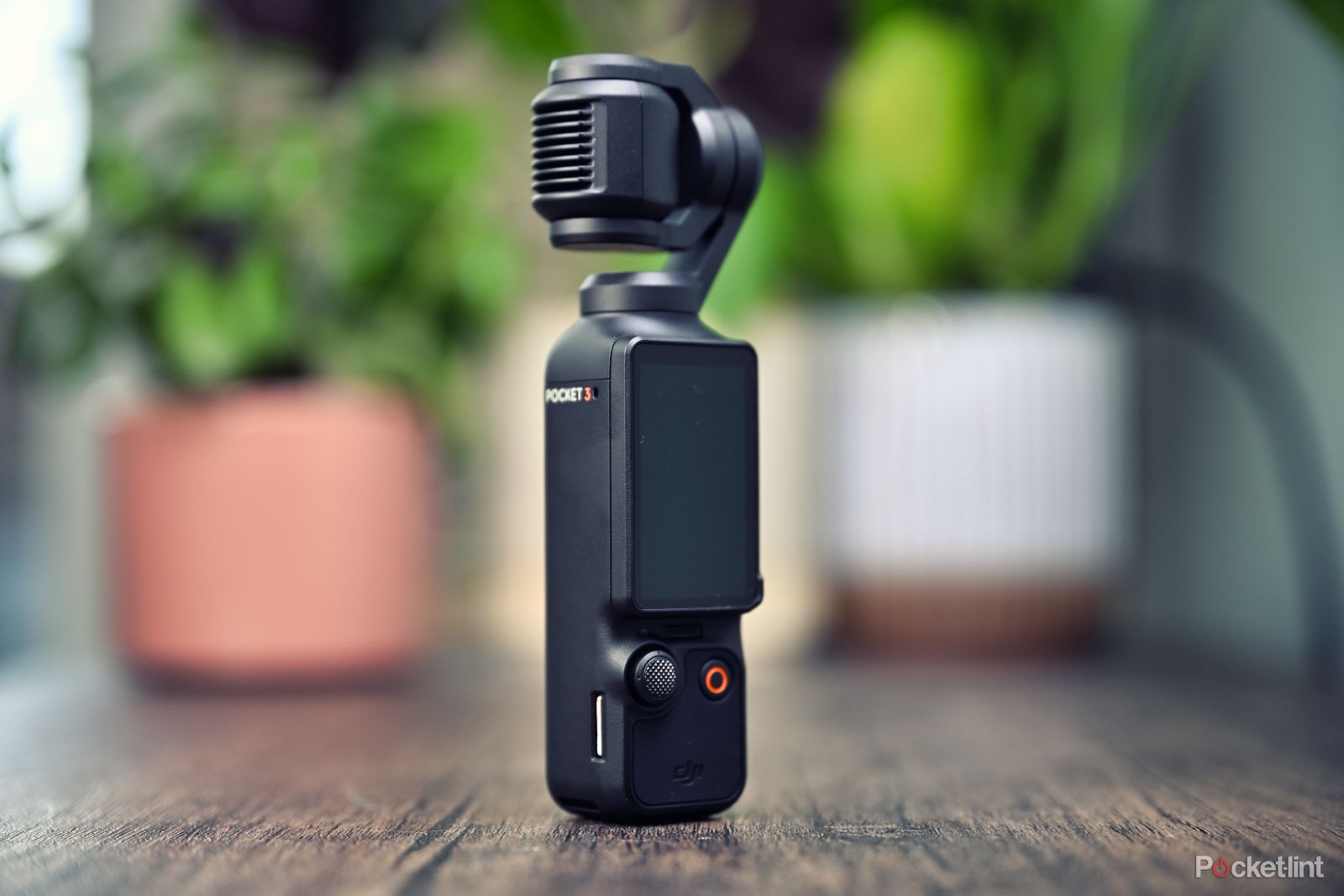
Best travel cameras: Lightweight options to capture memories on your journey
From the pocket-sized GoPro to the best mirrorless Canon models, and even a tiny but mighty drone, these are the best cameras for travel shots.
Your phone might even allow you to shoot in a RAW format. The goal here is to capture the most data-rich, rawest, and highest-resolution image possible, without any adulteration. It might not look amazing now, but you’ll be able to bring out the details and colors in an editing software later.
3. A tripod is essential
Since you’ll be using a long exposure, astrophotography is basically impossible without a steady camera. A tripod, even a basic one, will keep your camera from shaking while it captures the sky. If you already have a camera tripod, consider buying a sturdy phone mount to attach it. There are also tripods specifically designed for phones, and they’re typically lighter in weight and more portable than full-fledged camera tripods.
Also, if it’s windy, we recommend tying a plastic bag filled with rocks to the middle of the tripod to weigh it down. This can make a big difference, even in a light breeze. In the same vein, don’t extend your tripod higher than it needs to be, since it will stand more steadily as close to the ground as possible.
4. Use a remote shutter or a timer
This is one final measure to ensure your phone stays as still as possible while capturing its long-exposure shot. A remote shutter is a small device that connects to your phone via Bluetooth, and it lets you snap the photo without needing to touch your phone. Even the smallest bump can ruin a long-exposure shot, so a remote shutter will keep those clumsy hands away.
Another option is to use a timer. Basically, every phone camera has the option for a timer, and enabling a 5-second delay is easy. We generally prefer remote shutters, however, since they’re entirely touch-free and allow you to start the capture at any time. You can check out our review of our favorite remote shutter in step 7.
5. Wait for clear skies without any light pollution
For those that live near big cities, there’s not much you can do to avoid light pollution beyond taking a trip to the countryside. Fortunately, you can plan ahead to make sure your trip isn’t in vain. First, look up a light pollution map of your area, and find a spot within driving distance with the least amount. Then, check the lunar cycle. Some people consider moonlight to be the biggest light polluter. It’s a natural phenomenon, of course, but it nonetheless will cast enough light to overexpose astrophotography. You can aim for dates when the moon is new, or you can try to find a time at night when the moon has already set.
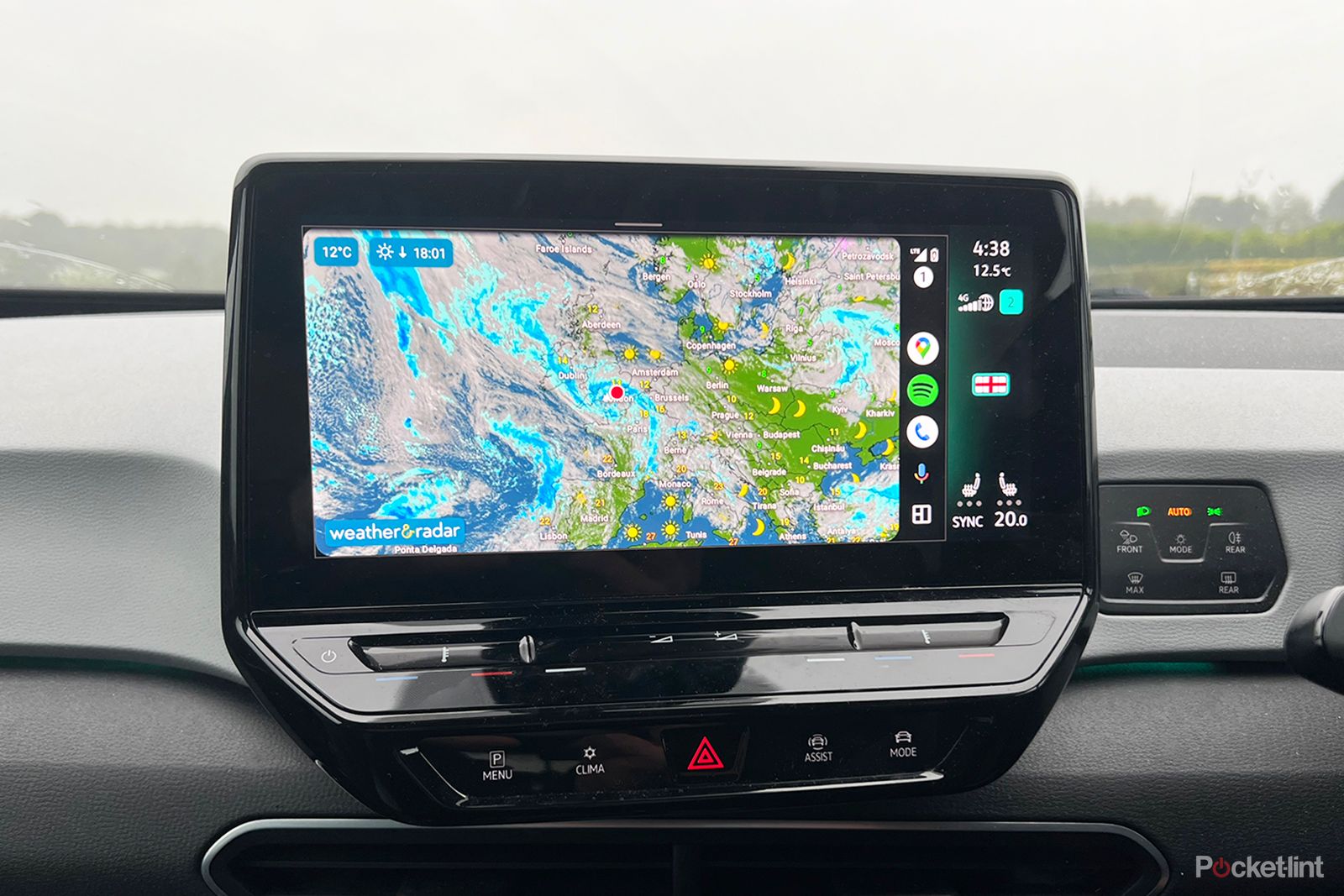
How to use Android Auto to get weather alerts while you drive
Don’t let bad weather get in the way of an epic road trip.
Finally, check the weather. Overcast, cloudy, and rainy days are obvious no-gos. There are a couple of nifty websites that combine all these factors to predict the stargazing conditions. Here, a simple web search may save you from frustration.
6. Edit to bring out the details
With all that work to snag a shot of the heavens, there’s still more to do when you get home. If you don’t yet have image editing software on your computer, you can try out free ones like GIMP and Darktable. For a professional suite of tools, you’ll have to pay for Photoshop or Lightroom.
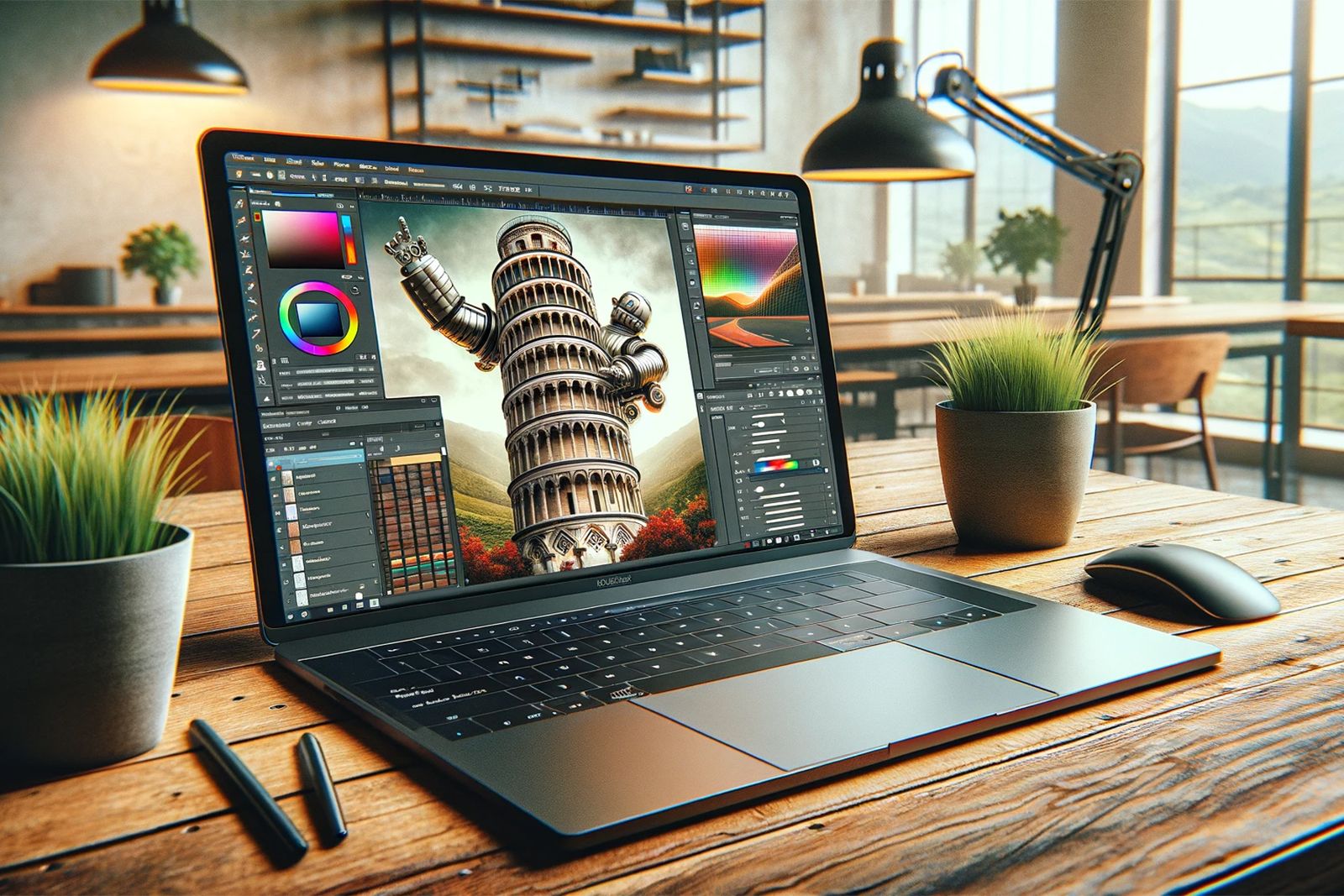
My 5 must-try Photoshop tips to edit photos in 5 minutes or less
Photoshop is a powerful editing tool but it’s easy to get lost in all the different tools. Here are five tips for quickly editing your images.
The aim is to lower the exposure, raise the contrast, raise the highlights, raise the whites, and darken the blacks, in that order. Don’t go overboard. Instead, tweak each setting one by one until you arrive at the image you prefer. If the software has options for texture, clarity, and dehaze, you can raise these values as well. It will take some practice to discover the optimal levels, but it’s a skill worth honing.
Consider these 4 gadgets to help you take top quality night sky photos with your smartphone
We mentioned a couple of essential accessories to take astrophotography with your phone. A tripod and a remote shutter will help immensely to keep your long-exposure shots still. Then, there are some products, like telescope phone mounts, that can expand your toolkit even further. Here, we review our favorite products for astronomical endeavors, so check them out.
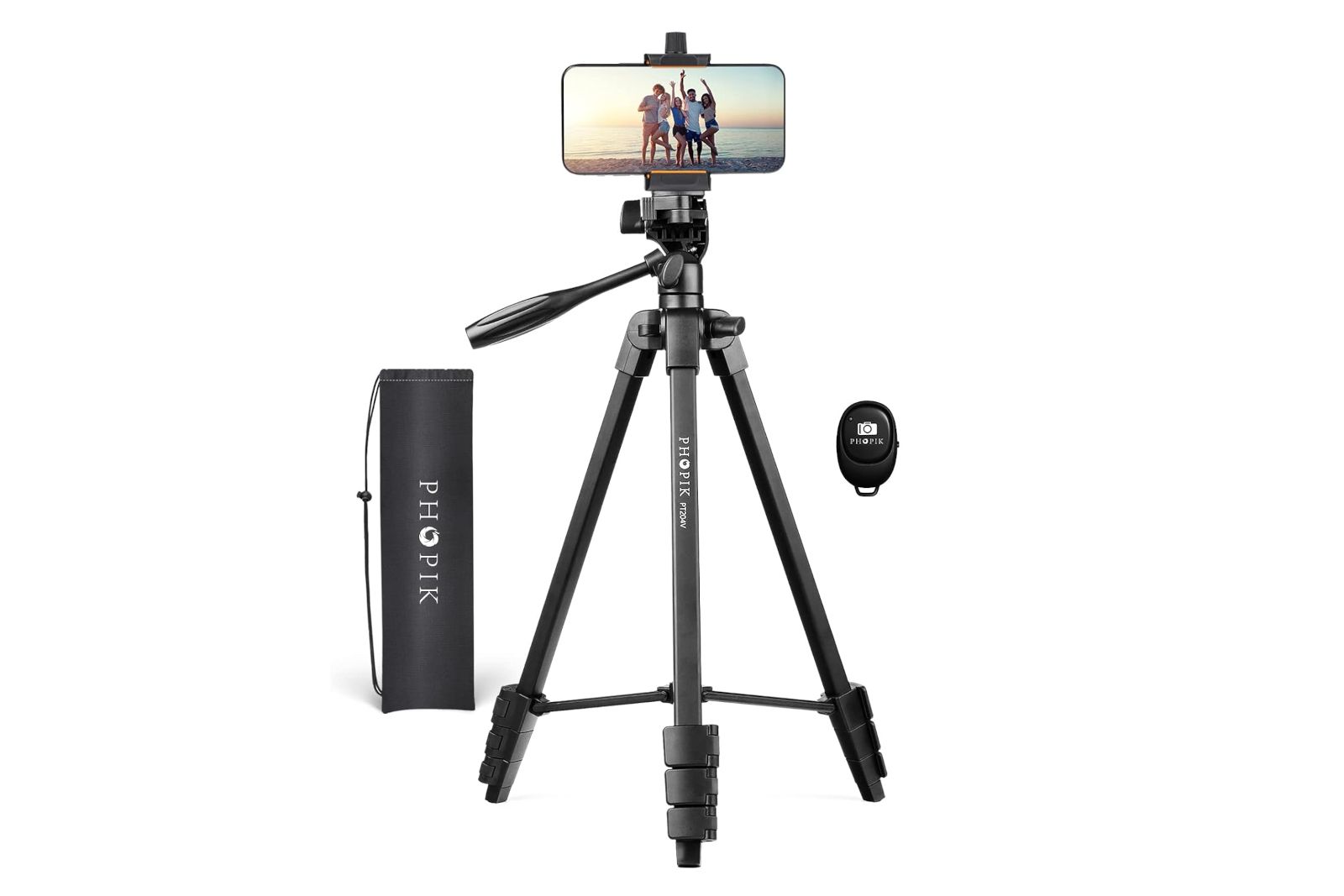
Phopik Lightweight Phone Tripod 55 Inches
The travel tripod for steady shots of the stars
This Phopik tripod is perfectly geared towards phone-based astrophotography, and the price is a bargain.
- Lightweight yet super sturdy
- Collapses into small size
- Phone mount is detachable
- Includes a remote shutter
- Sacrifices durability for the light weight
For taking astrophotography with your phone, a tripod is a necessity. But not just any tripod will do the trick. You’ll need something portable to take into the countryside where the night sky is at its clearest, and it should also be sturdy enough to hold steady in the wind. That’s where this tripod from Phopik shines.
With a total weight of only 1.68 pounds, it’s certainly a viable option for joining you on the trail. And yet, for all its lightweightedness, the strong legs can support loads up to 6.6 pounds. Your phone probably doesn’t weigh that much, but it’s a testament to the strength of the aluminum build.
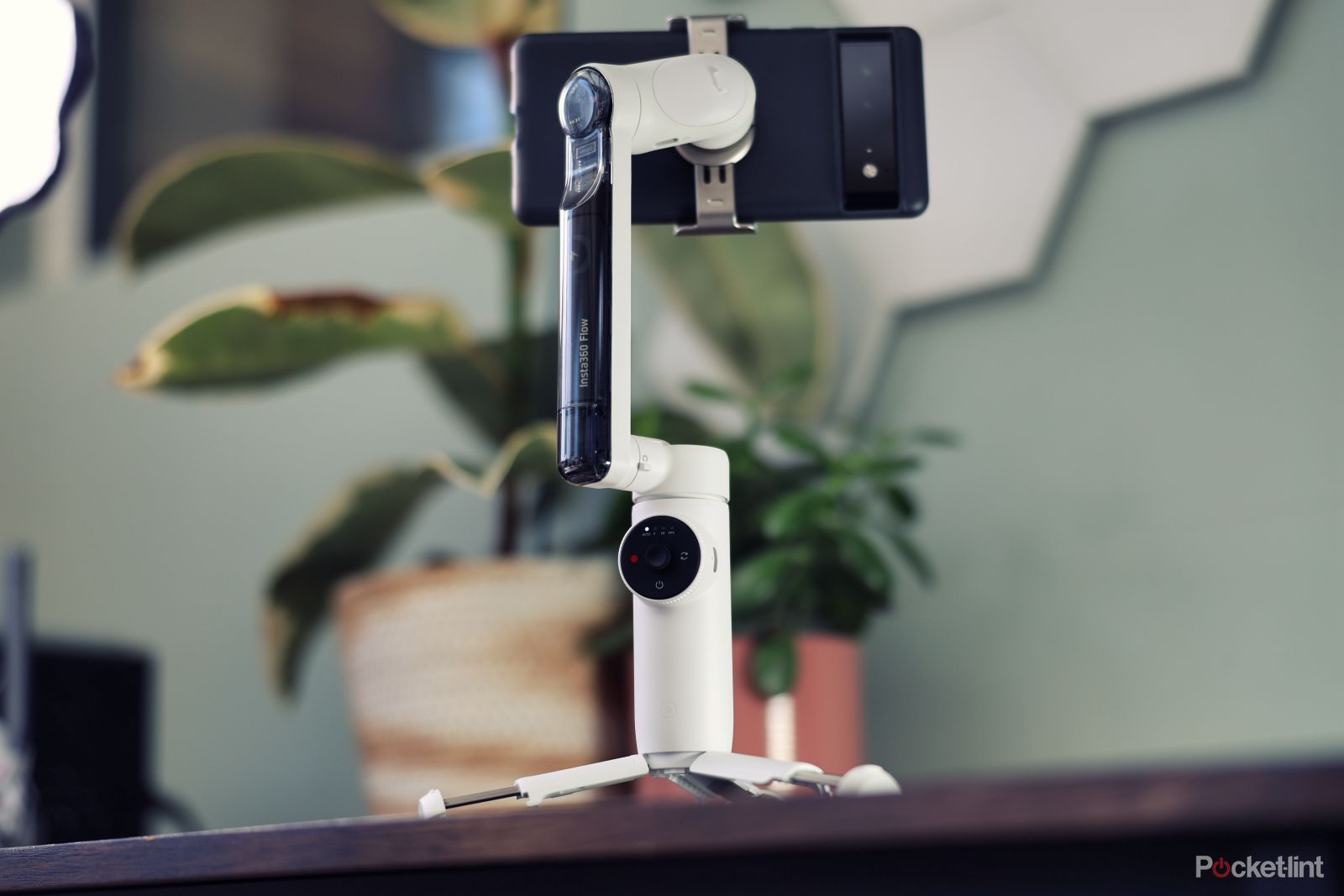
Best tripod phone mounts: The support your photos need
Tripod phone mounts offer hobbyists and professionals alike stability and versatility for the best shots.
Fully collapsed, it measures in at 16 inches, which fits snugly in the included travel case. Fully extended, it stands at 55 inches, giving it a huge range of adjustability.
And adjustments are easy. The tripod head can tilt and pan, while the phone mount allows for both vertical and horizontal orientation. It also has a level bubble to help ensure that your setup is on solid ground, a boon for astrophotography where every bit of stability makes a difference. But what really sets this phone tripod apart from the competition is its versatility. In fact, it’s not really a phone tripod – it’s a bonafide tripod with a quality phone mount included. The standard ¼-inch mount screw allows use with full-sized cameras and other accessories. If, for example, you want to add another phone accessory, like a telescope adapter, then assembly is as easy as pie. Add to that the included remote shutter, and you have yourself the best darn tripod for phone-based astrophotography on the market.
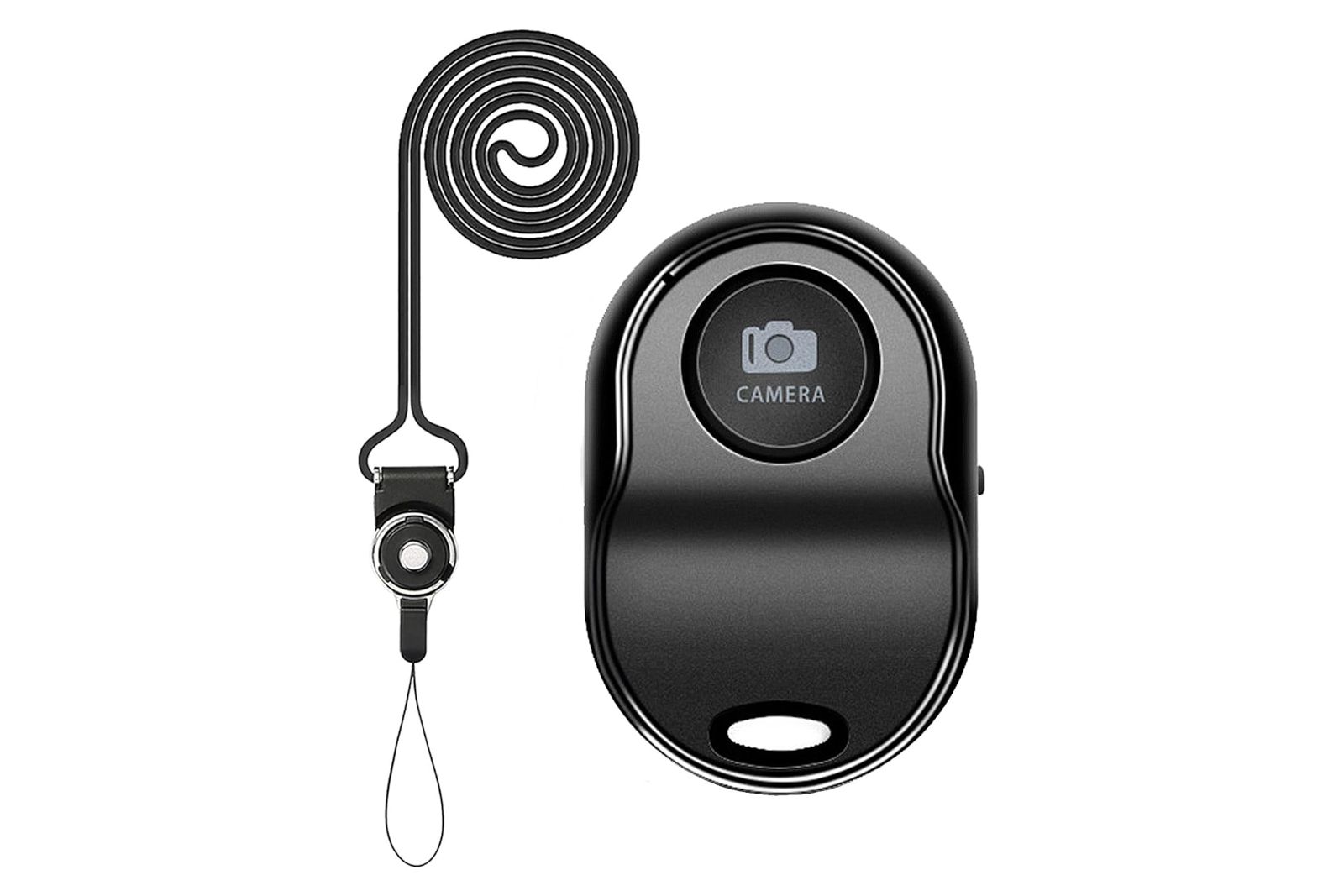
Ashutb Bluetooth Remote Shutter for iPhone & Android
The wireless way to avoid bumping your phone
$6 $8.98 Save $2.98
There are tons of remote shutters out there, but this upgraded option from Ashutb offers the best reliability and value for the price.
- Compatible with both Android and iOS
- Connects fast and easily
- Maximum range of 50 feet
- Extremely affordable
- The sleep mode to save power can’t be deactivated
As discussed in step 4, a remote shutter can make a huge difference in the stability of your shot. It’s a worthwhile investment, too, since they’re not wildly expensive. This little remote from Ashutb proves that in spades, with a low price and a highly effective Bluetooth 5.0 connection.
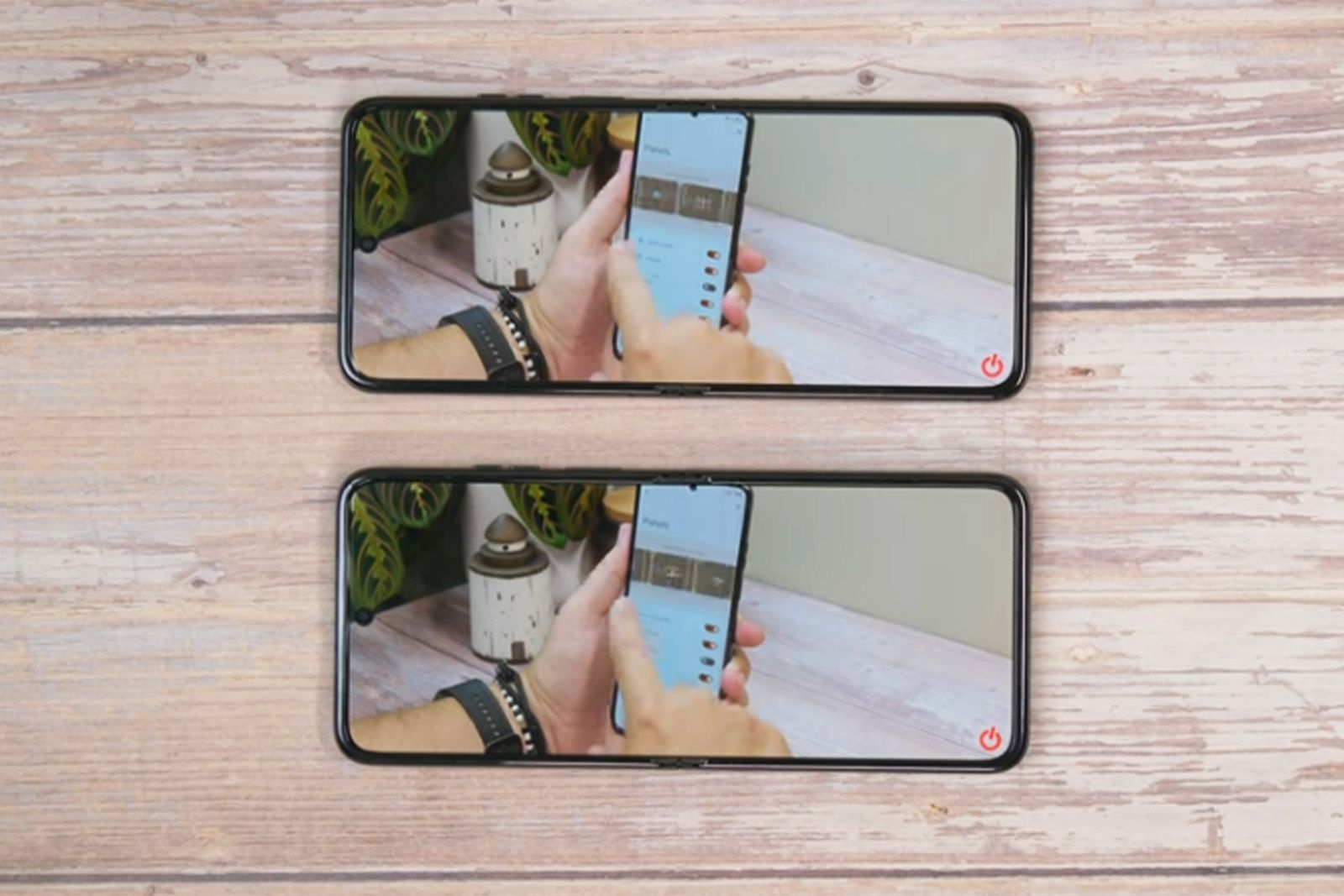
How to set up your office lighting for YouTube videos (and 3 must-haves to look pro)
We shed light on the best practices and products for making professional and post-worthy videos.
Additionally, it features a simple button for snapping the camera shutter, a neat lanyard to keep it in reach, and compatibility with the vast majority of phone types and camera apps. It pairs almost instantly with whatever Bluetooth device you use, and the response time between the click of the button and the release of the camera shutter is equally fast. What more could you ask for?
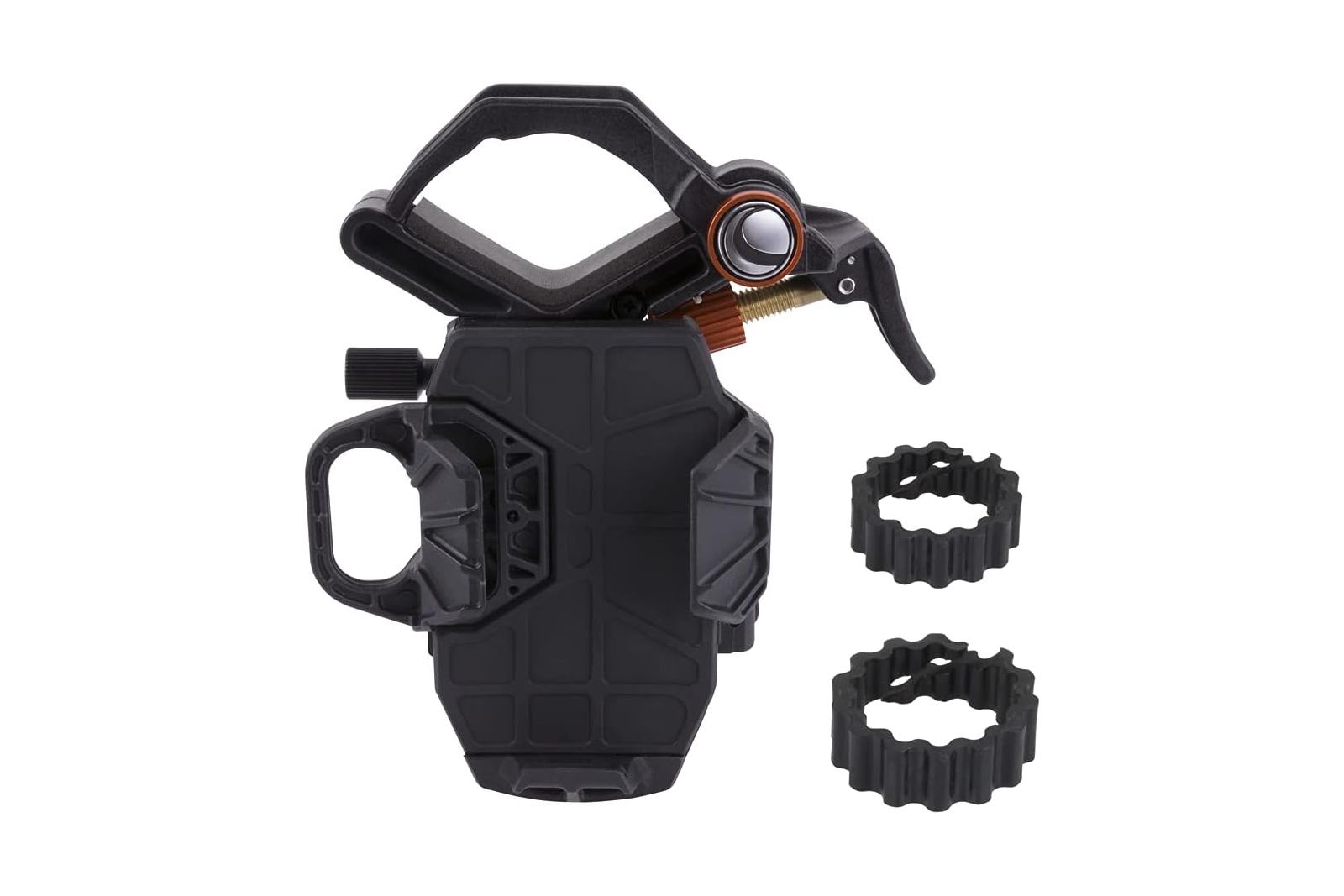
Celestron NexYZ Universal Smartphone Adapter for Telescope
Telescope + adapter + phone = incredible photos
$39 $75 Save $36
The NexYZ from Celestron effectively converts your telescope into a phone-camera lens, expanding the possibilities for astrophotography to cosmic levels.
- Precise manufacturing
- Alignment is extremely precise
- Universal compatability
- Durable, quality materials
- Takes some fiddling to get it aligned perfectly
Admittedly, the NexYZ from Celestron isn’t exactly an essential accessory, nor is it super cheap. But for those with a telescope, this little gadget will take your astrophotography to the next level. We’re talking about shots of planets, with the rings of Saturn in their full glory, the rusty-red ball of Mars, and the many moons that hover around Jupiter. It’s from Celestron, one of the most reputable names in amateur astronomy, so such shots aren’t out of the question.
Its operation is simple. The main focal ring attaches to any eyepiece between 35mm and 60mm. And to mount a phone, simply clamp it onto the plate. From there, you can make micro-adjustments in all three directions, X,Y, and Z, to ensure the camera is centered in front of the eyepiece. Once everything is in place, you should have a nice view of the telescope’s focus without needing to crane your neck and squint in. That means you can also adjust the telescope without removing your phone. If the night sky is clear enough, you should be able to hone in on planets and snap some epic shots.
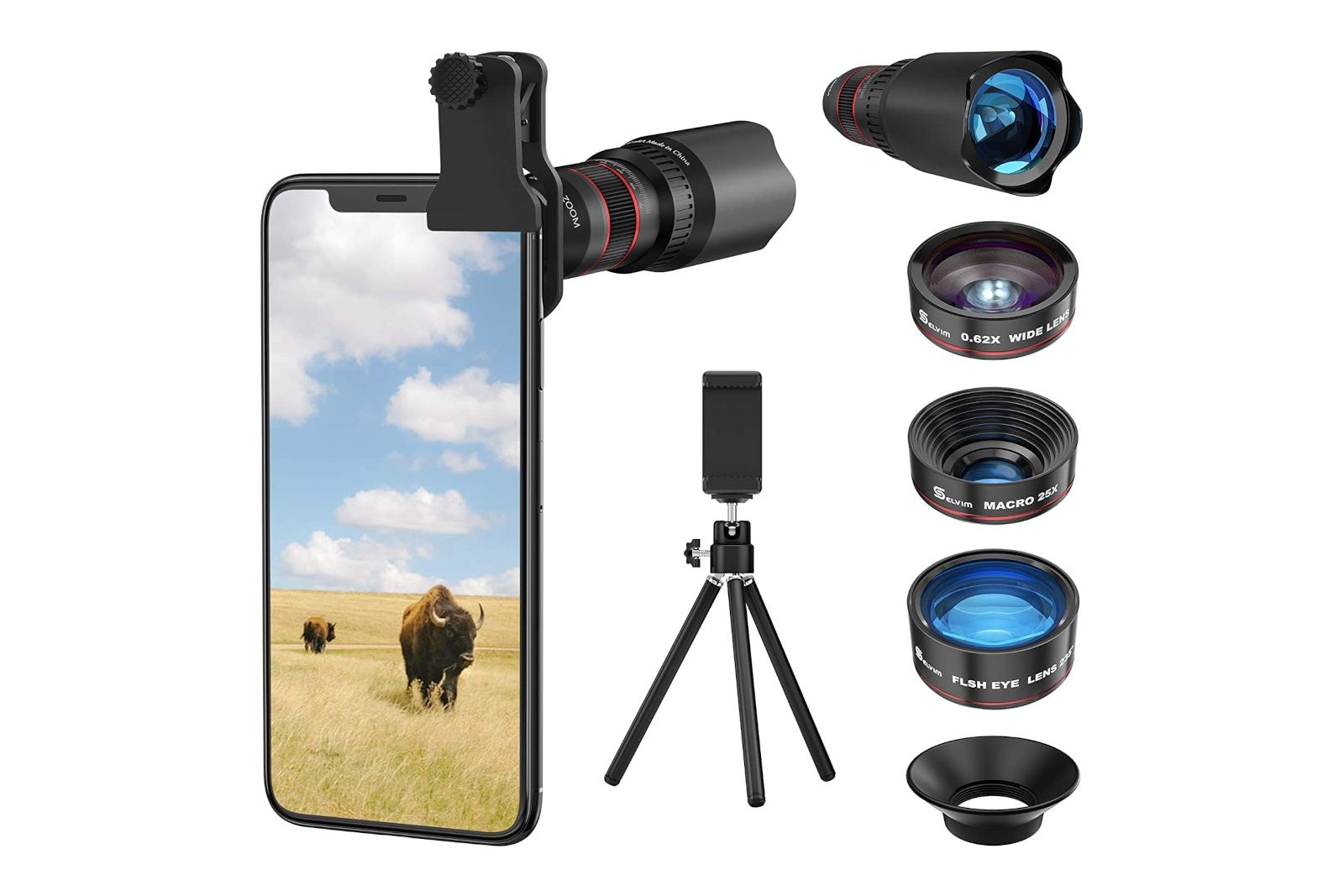
Selvim Phone Lens Kit with Telephoto Lens
The complete lens kit for phone photography
With four quality lenses in total, this phone-camera kit offers ample room to experiment with astrophotography for an affordable price.
- Amazing value for the price
- Mount fits securely to almost every phone model
- Quality optical glass
- Includes a mini tripod
- You’ll likely have to remove your phone case
- Easy to misalign the sights when shooting handheld
Most phone cameras have fixed focal lengths and fixed apertures. This camera lens kit from Selvin flips the script. It comes with four quality lenses that clip in front of your phone’s camera to change the focal length. The star of the show here is the 22X telephoto lens. It attaches firmly to just about any phone model to help zoom in your view of the heavens. Its optics are surprisingly clear, too, with noticeable sharpness and little aberration. It’s no match for Hubble, but it holds its own.
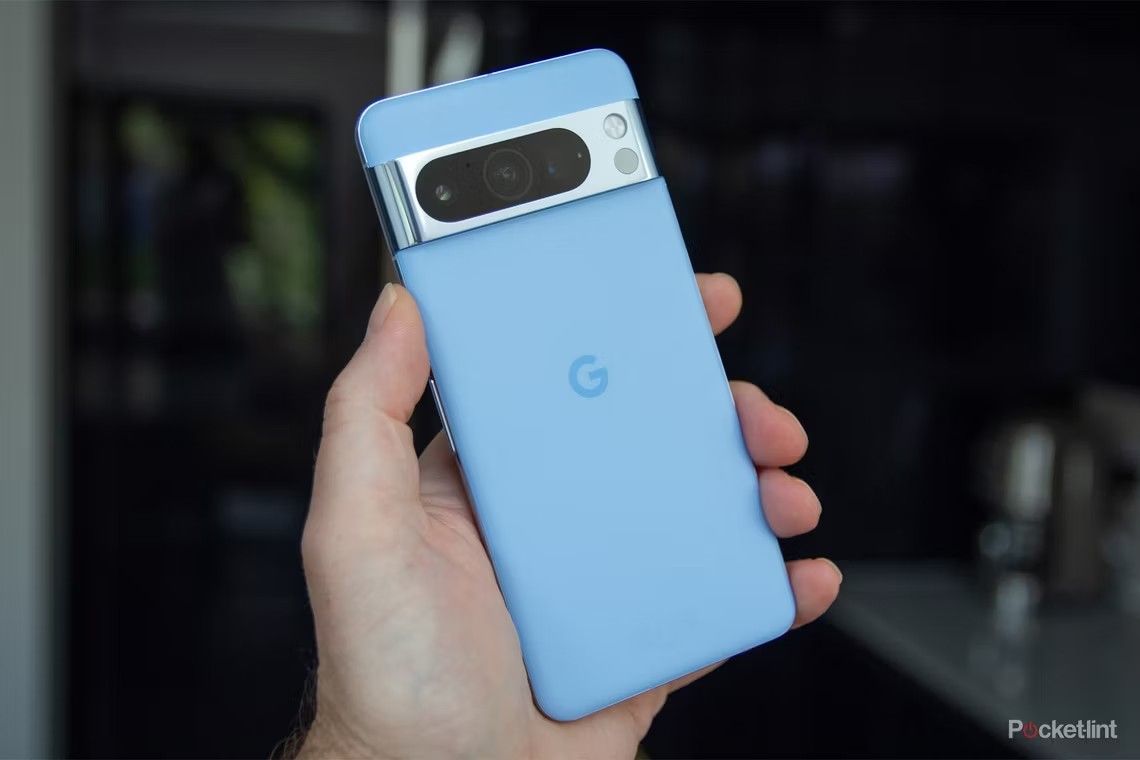
Best camera phones: Handsets that take pro photos and videos
With the best camera phones, you can take take pro-level photos and videos without the bulky DSLR bag.
The other lenses are worth experimenting with as well. You can use the fisheye lens to take some interesting fishbowl-esque images of the night sky, and the wide-angle lens expands the field of view to include terrestrial features, like trees and mountains, along the border of your shot. Best of all, the price is super affordable, so there’s little to lose and a lot to gain.
What about photographing the moon?
Moon photography is also a part of astrophotography, but it involves techniques different from those listed above. For one, you don’t need to use long exposure. The moon reflects plenty of light, so feel free to use a faster shutter speed. You might even get away with using automatic exposure settings. Higher shutter speeds will actually enhance the clarity and sharpness of your shot. Still, you’ll have to balance out shutter speed, aperture, and ISO when exposing manually. The lower the ISO, the less grainy your image will appear. Finding that balance is a skill, and practice makes perfect.
Nonetheless, it’s still a good idea to use a tripod and remote shutter. You should also stick to our other rules, like maximizing the image quality and avoiding filters. And, of course, check the calendar and weather reports to make sure your lunar subject even shows up for the shoot.
Trending Products

Cooler Master MasterBox Q300L Micro-ATX Tower with Magnetic Design Dust Filter, Transparent Acrylic Side Panel, Adjustable I/O & Fully Ventilated Airflow, Black (MCB-Q300L-KANN-S00)

ASUS TUF Gaming GT301 ZAKU II Edition ATX mid-Tower Compact case with Tempered Glass Side Panel, Honeycomb Front Panel, 120mm Aura Addressable RGB Fan, Headphone Hanger,360mm Radiator, Gundam Edition

ASUS TUF Gaming GT501 Mid-Tower Computer Case for up to EATX Motherboards with USB 3.0 Front Panel Cases GT501/GRY/WITH Handle

be quiet! Pure Base 500DX ATX Mid Tower PC case | ARGB | 3 Pre-Installed Pure Wings 2 Fans | Tempered Glass Window | Black | BGW37

ASUS ROG Strix Helios GX601 White Edition RGB Mid-Tower Computer Case for ATX/EATX Motherboards with tempered glass, aluminum frame, GPU braces, 420mm radiator support and Aura Sync










